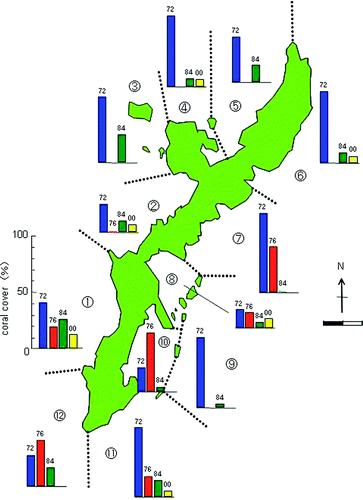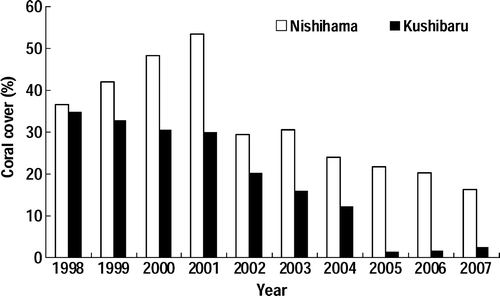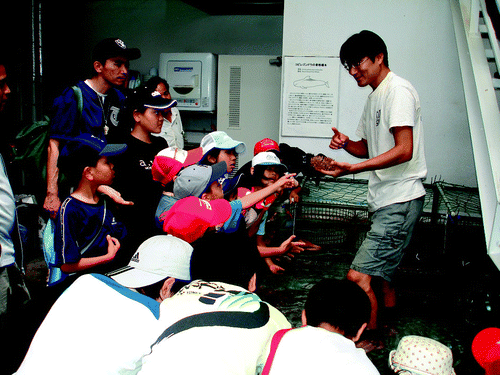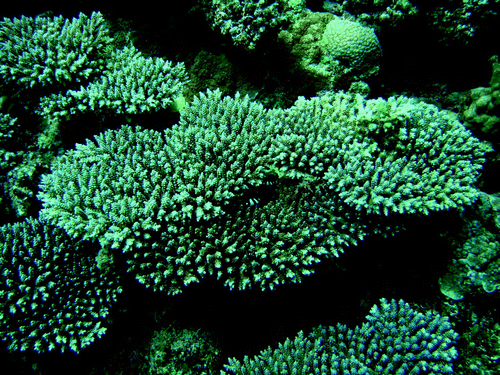Figures & data
Figure 1. Coral cover decline in Okinawa Island after 1972. After the return of administrative rights over Okinawa to Japan in 1972, rough-and-ready economic development proceeded, and it caused mismanagement of public works. Coastal reclamation, red soil run-off, coral bleaching, eutrophication, and outbreaks of the crown-of-thorn starfish have been causing the most serious impacts to coral reefs in Okinawa Island. The figure was drawn based on various data sources including Sakai & Nishihira (Citation1998) and Nakaya (Citation2001).

Figure 2. Variation of coral cover of two popular diving spots (Kushibaru and Nishihama) at Akajima (modified after Taniguchi Citation2004). Data are based on 0.5×30 m belt transect survey. Coral cover (~35%) of the two spots in September 1998 indicates condition of corals immediately after a coral bleaching event. Remarkable recovery of the coral reef community occurred from 1998 to 2001 after the coral bleaching at Nishihama when fishermen and diving services, on their own initiative, closed this diving spot for 3 years. After 2001, however, an abnormally high population of crown-of-thorns starfish (COTS) devastated coral reefs in the area until 2006. At Nishihama, the local diving association killed the COTS regularly. The effort seemed to help conservation of the corals in the early period, but ended in failure at a later stage. At Kushibaru where the elimination programme was not taken, the coral cover decreased from 30% to 3% by 2006.

Figure 3. Public education activity at Akajima Marine Science Laboratory.
The economy of Akajima is largely dependent on tourism. If the coral reefs lost their resilience and beauty, the prosperity of the island could not continue. The laboratory has been offering marine studies for students and publishing a bimonthly newsletter describing coral reefs to local stakeholders. Today, all islanders know how important the coral reefs are.

Table I. Coral cultivation and transplantation.
Figure 4. Cultured Acropora tenuis at Akajima, Okinawa. The coral propagules were cultured from eggs in the nursery starting in June 2005 and transplanted onto the seabed at Akajima in December 2006. The photograph was taken in January 2009 (3.5-years-old; about 20 cm in diameter).
